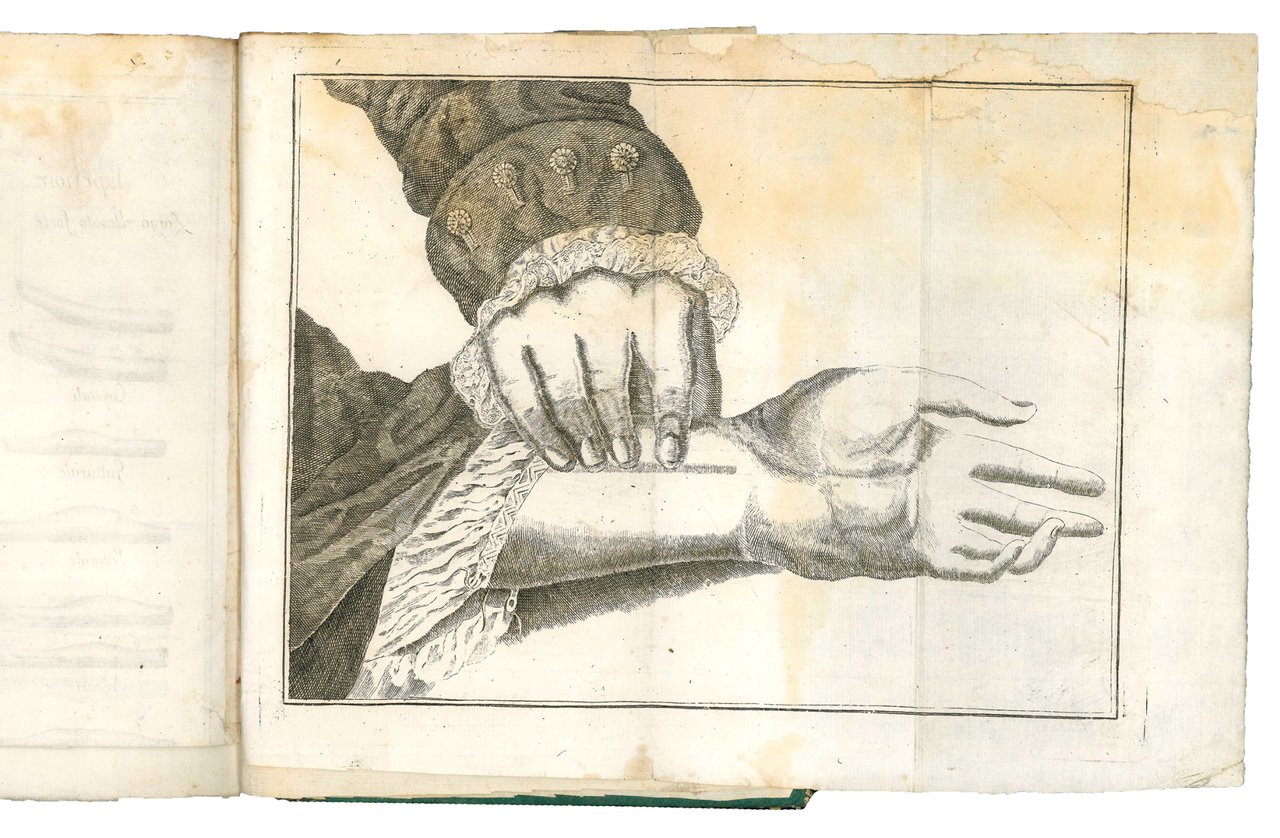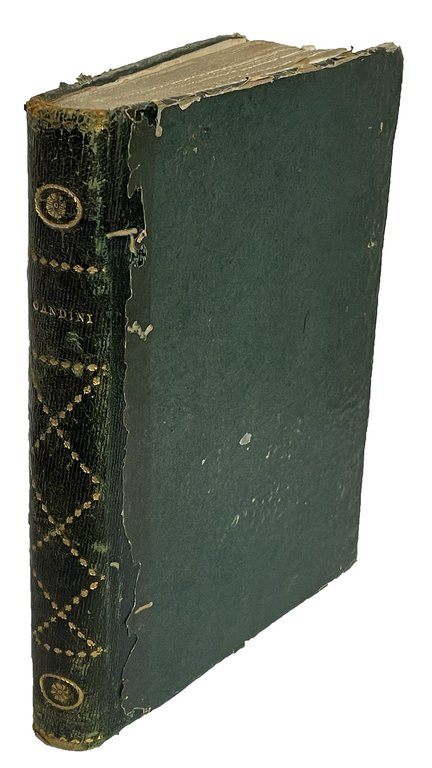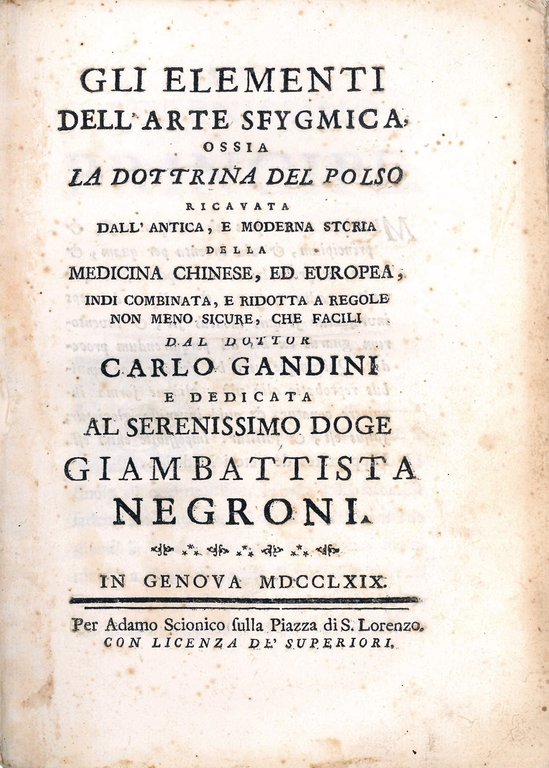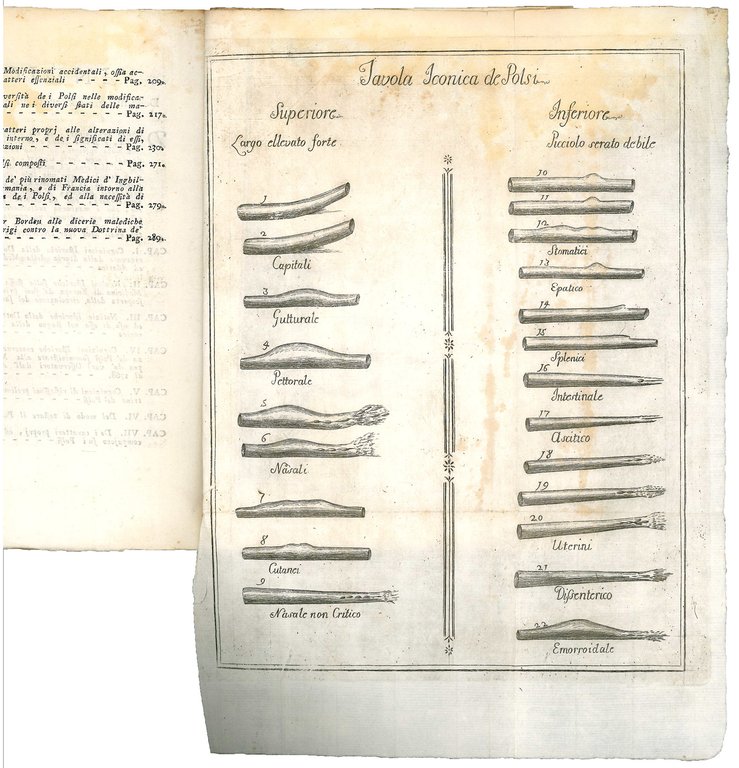



Livres anciens et modernes
GANDINI, Carlo (1705-1788)
Gli elementi dell'arte sfygmica, ossia la dottrina del polso ricavata dall'antica, e moderna storia della medicina chinese, ed europea, indi combinata, e ridotta a regole non meno sicure che facili dal dottor Carlo Gandini e dedicata al serenissimo doge Giambattista Negroni
Genova, Adamo Scionico sulla piazza di S. Lorenzo, 1769
500,00 €
Govi Libreria Antiquaria
(Modena, Italie)
Les frais d'expédition corrects sont calculés une fois que l'adresse de livraison a été indiquée lors de la création de la commande. Un ou plusieurs modes de livraison sont disponibles à la discrétion du vendeur : standard, express, economy, in store pick-up.
Conditions d'expédition de la Librairie:
Pour les articles dont le prix est supérieur à 300 euros, il est possible de demander un plan de paiement échelonné à Maremagnum. Le paiement peut être effectué avec Carta del Docente, Carta della cultura giovani e del merito, Public Administration.
Les délais de livraison sont estimés en fonction du temps d'expédition de la librairie et de la livraison par le transporteur. En cas de retenue douanière, des retards de livraison peuvent survenir. Les frais de douane éventuels sont à la charge du destinataire.
Pour plus d'informationsMode de Paiement
- PayPal
- Carte bancaire
- Virement bancaire
-
-
Découvrez comment utiliser
votre Carta del Docente -
Découvrez comment utiliser
votre Carta della cultura giovani e del merito
Détails
Description
First edition of this treatise on the art of pulse interpretation. Carlo Gandini was born in Verona in 1705 and studied medicine and philosophy probably at the University of Padua, where G.B. Morgagni and A. Vallisneri were teaching in those years. Having completed his university training, around 1727 Gandini began practicing medicine presumably in Verona. Unsatisfied with the traditional medicine of this time, from 1734 he began a long period of travelling in order to learn new methods from different European medical schools. He visited Germany, Holland, England, where he witnessed the inoculation of smallpox (of which he later became a tenacious advocate upon his return to Italy), Portugal, and Spain, where the physician M. Gutierrez de los Ríos, a follower of F. Solano de Luque, introduced him to the practice of pulse evaluation. The method adopted by Gandini had a highly formative value for the young physicians who could thus observe normal physiological changes and the appearance of pathological states, learning how to discern the signs of disease (cf. C. Farinella, Gandini, Carlo, in: “Dizionario Biografico degli Italiani”, 52, 1999, s.v.).
Italian Union Catalogue, IT\ICCU\TO0E\008496; Blake, 165; Brugnoli, p. 24; Bibliotheca Walleriana, I, p. 157.

